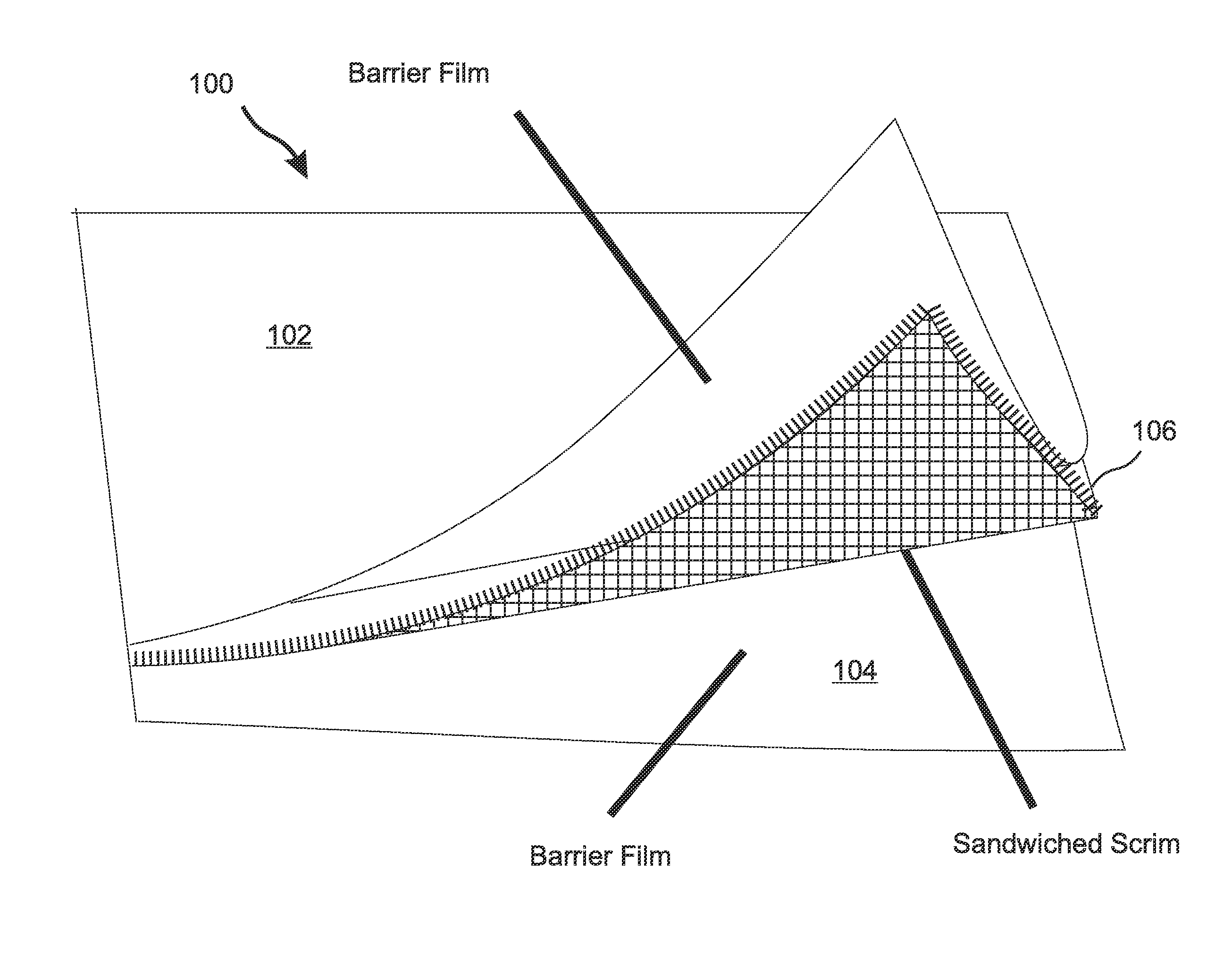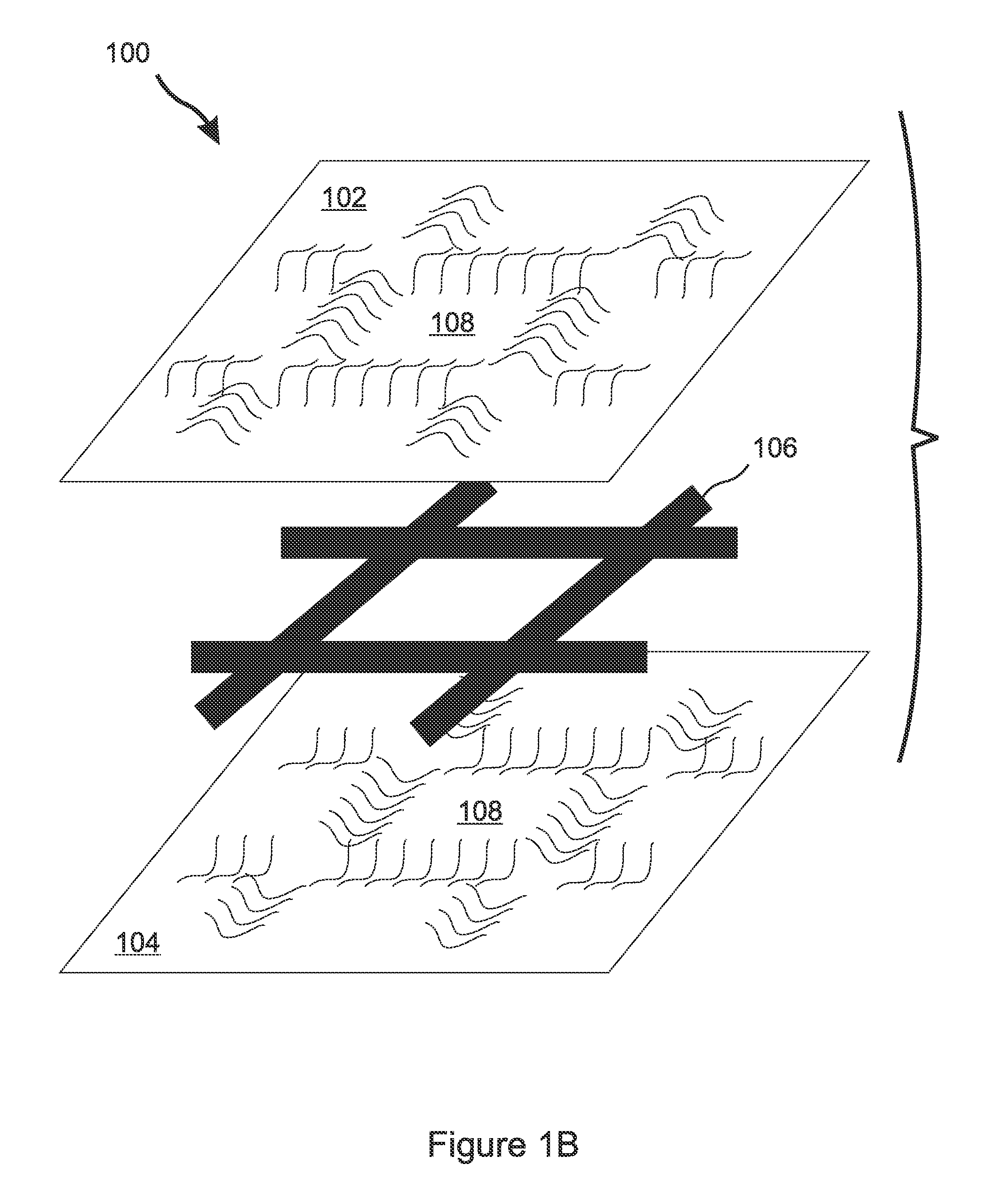Multi-layer chemical and biological protection fabric for mobile shelters
a technology of biological protection fabric and mobile shelter, which is applied in the field of multi-layer chemical and biological protection fabric for mobile shelter, can solve the problems of disrupting opacity and film in these embodiments no longer strictly flat, and achieve the effect of high tensile strength
- Summary
- Abstract
- Description
- Claims
- Application Information
AI Technical Summary
Benefits of technology
Problems solved by technology
Method used
Image
Examples
Embodiment Construction
[0041]The present invention is a lightweight, low bulk, multi-layer fabric that can be used to construct mobile shelters for protecting occupants against chemical and biological (“CB”) agents as well as environmental factors such as rain, wind, and sun exposure. The fabric of the present invention provides chemical and biological protection that is equivalent to or better than current designs, while the bulk and weight of the present invention are typically about half of the bulk and weight of the currently used materials. For example, typical CB protection materials currently weigh about 20 oz / yd2, while embodiments of the present invention weigh only about 12 oz / yd2 or less.
[0042]The excess weight and bulk of the currently used fabrics arises mainly from excess coating material that must fill in the gaps between yarns in the woven fabric before a protective coating can be formed over the entire surface. Of course, this problem could be avoided by using a non-woven fabric such as a...
PUM
| Property | Measurement | Unit |
|---|---|---|
| roughness | aaaaa | aaaaa |
| volume | aaaaa | aaaaa |
| thick | aaaaa | aaaaa |
Abstract
Description
Claims
Application Information
 Login to View More
Login to View More - R&D
- Intellectual Property
- Life Sciences
- Materials
- Tech Scout
- Unparalleled Data Quality
- Higher Quality Content
- 60% Fewer Hallucinations
Browse by: Latest US Patents, China's latest patents, Technical Efficacy Thesaurus, Application Domain, Technology Topic, Popular Technical Reports.
© 2025 PatSnap. All rights reserved.Legal|Privacy policy|Modern Slavery Act Transparency Statement|Sitemap|About US| Contact US: help@patsnap.com



